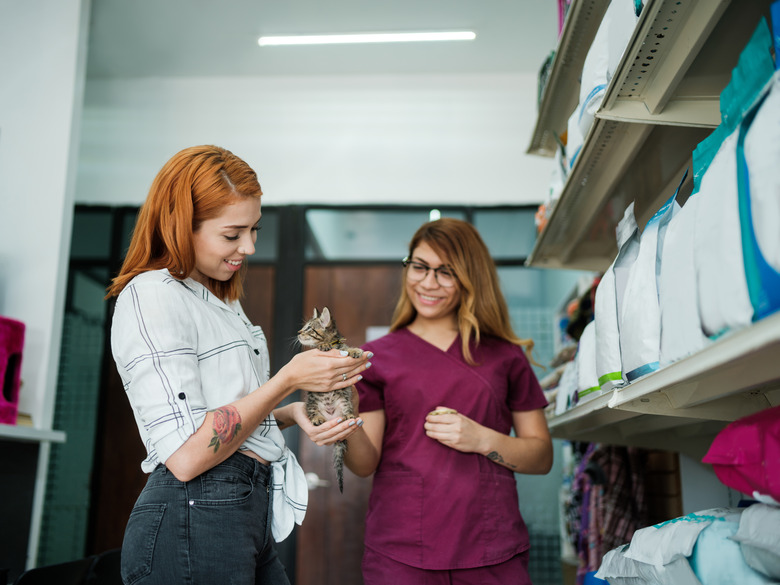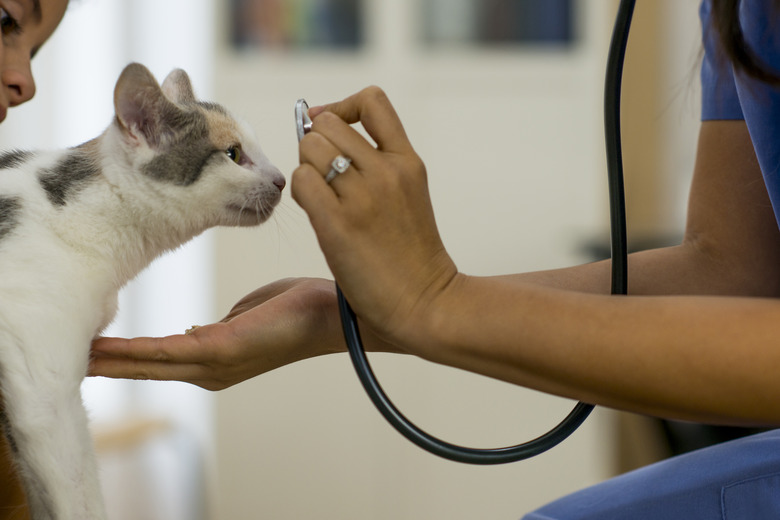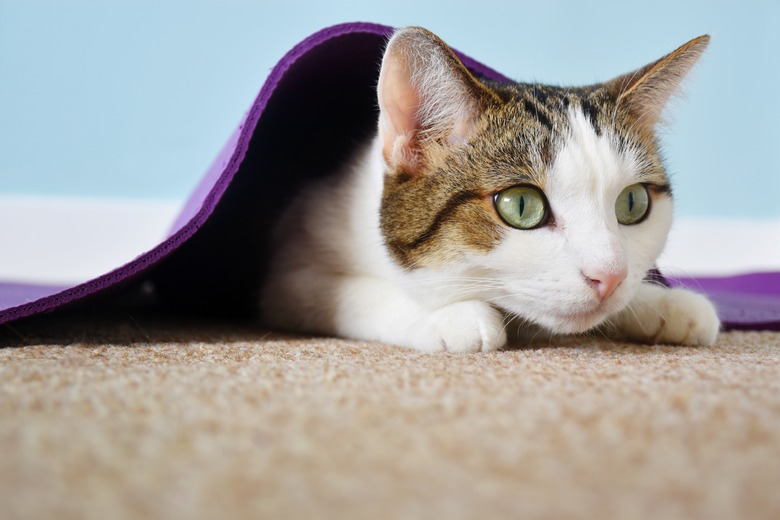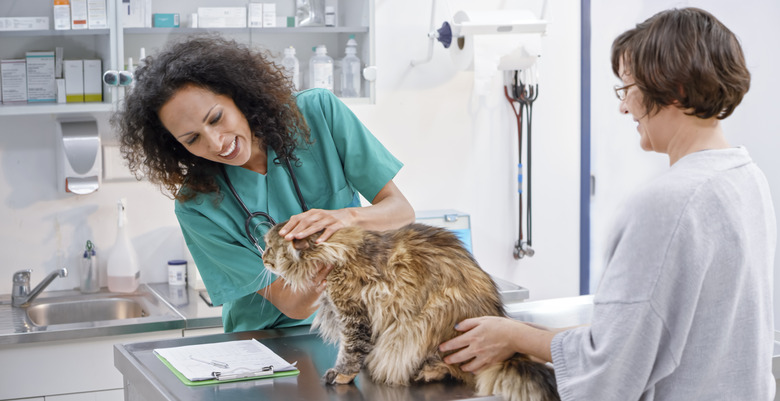Helping New Cats Develop A Positive Relationship With Your Vet
Does your cat hate going to the vet? Many cats have negative associations with going to the vet because it can be scary, or uncomfortable. The vet can also be upsetting for cats because it is outside of their normal routines. If you have a new cat or kitten, you can help them develop a positive relationship with vets and vet visits, with some careful planning and preparation. This will help prevent vet visits from being a source of stress for both you and your cat.
Introduce your cat to the carrier
Introduce your cat to the carrier
One of the best ways to help your cat prepare to have a positive relationship with the veterinarian is something you can work on at home. When going to the vet your cat should ride in a carrier, so it's essential for your cat to have a positive relationship with their carrier — before you need to go to the vet.
The goal of crate training is for your cat to comfortably go into their carrier on their own using positive reinforcement training and be comfortable in their carrier. One mistake many cat owners make is to only pull the cat carrier out when taking the cat to the vet, so the cat's only association with the carrier is a vet visit. To help your cat develop positive associations with the carrier make the carrier a regular part of your cat's routine.
To help your cat adjust to their carrier, leave the carrier out in your home so your cat can choose to select it as a place to nap. You can put treats, food, or toys into the carrier to encourage your cat to go into the carrier and help them make positive associations.
When your cat is comfortable going into the carrier, try closing the door briefly, praise, and then reward your cat with treats. Then, open the door again. Slowly build up to your cat being in the carrier for longer periods of time. Bring your cat in their carrier to the car, take a short drive, and return home without anything stressful happening for them.
Take your cat to the vet for "hello" visits
Take your cat to the vet for "hello" visits
When socializing young dogs and puppies it's common to bring them to vet offices just to say hello. They get treats but do not have any kind of procedure done during this visit. The same socialization and exposure technique can be beneficial for cats. Ask your vet if you can bring your cat to the clinic for a meet and greet visit.
The goal of this visit is to help your cat make positive associations with being at the vet clinic, without any examinations or stressful procedures happening. When you bring your cat for a visit, take your cat into an exam room, and have treats that your cat enjoys ready.
If possible, give your cat an opportunity to explore, get comfortable, eat some treats at the vet's office, and then head back home. The goal isn't to see how long your cat can stay there, but instead, to keep this interaction with the clinical environment short, positive, and paired with high-value treats.
Advocate for your cat
Advocate for your cat
When it's time for an actual veterinary appointment you can advocate for your cat's comfort in the clinic environment with the goal of reducing stress. When scheduling your cat's appointment, ask if it's possible to be immediately placed in an exam room when you arrive. Then, when you arrive at the clinic, explain you want to immediately go to an exam room.
Getting your cat out of the busy lobby can help reduce stress for your cat. This will prevent your cat from having to see lots of people and other animals passing by going in and out of the clinic — which can be very overstimulating and frightening for cats. Getting your cat quickly to the quiet exam room can help to shift your cat's entire perspective about being at the clinic.
Once veterinary technicians and the veterinarian come in, continue to advocate for your cat and their comfort. Explain to clinic staff that you want the appointment to go at your cat's pace and that your goal is to prioritize their comfort. Be sure that you have conversations in advance with your vet about what kind of stress your cat is experiencing. Increasingly, veterinarians and veterinary professionals understand this.
Bring your cat's comfort items
Bring your cat's comfort items
Try to make vet visits as fun and comfortable as possible for your cat. Bring familiar and comforting things for your cat. Metal exam tables are easy to sterilize, but they are slippery, and most cats are uncomfortable or scared of them. Even if clinics have towels to put down those easily slip, which is uncomfortable for cats.
Bringing a non-skid bathmat or yoga mat can help to make the exam more comfortable. You can also bring a blanket or small cat bed that your cat finds comforting as this can make the exam room more comfortable for your cat. You'll also want to be sure to bring plenty of your cat's favorite treats. You can also use cat pheromone sprays in your cat's carrier, blankets, and anything else you bring to the clinic to help your cat relax.
Bring cat activities to the vet visit
Bring cat activities to the vet visit
While waiting for the examination to begin, and during times when your vet isn't directly working with your cat, it's helpful to bring activities for your cat. Lickimats are small textured plastic or silicone mats that are a great way to engage and de-stress your cat during the visit. To use a lickimat, spread soft and spreadable cat treats or wet cat food onto the lickimat.
Cats can use lickimats to redirect themselves while they are waiting in the exam room, during some parts of the examination, and even while they are getting vaccinations. Licking at the mat is stress relieving for cats and provides them something fun to focus on during the visit. These mats also support cats with making positive associations with being at the clinic.
Finding the right vet for your new cat or kitten
Finding the right vet for your new cat or kitten
If you have a shy and nervous cat or are just wanting to set your cat up for success at the vet, it's helpful to find a vet who specializes in caring for cats. Although in general, all small animal vets are qualified to treat cats, there are some vets who make cats their specialty. The American Association of Feline Practitioners is a great resource for finding a cat-specific vet.
You may also want to look into finding a Fear Free Certified clinic. Fear Free certified clinics put the emotional welfare of pets at the forefront of all interactions. These clinic practitioners are trained specifically to be aware of a cat's body language and to use fear free handling practices. The focus of fear free visits is ensuring that appointments move at the animal's pace and that they are comfortable with what is going on. This is an ideal structure for vet visits with cats.
In summary
In summary
Veterinary visits can be stressful times for cats, but they don't have to be. With some preparations and planning, you can make vet visits less stressful for your cat. Plan so your cat is comfortable traveling in their carrier. Advocate for your cat's needs to make sure veterinary clinic staff will center your cat's emotional welfare and comfort during the visit. Bring your cat's favorite treats to the clinic, as well as comfort objects that will make the clinic environment softer and more comfortable. You can even bring interactive activities like lickimats and wet food to help your cat see vet visits as a fun place to be.



